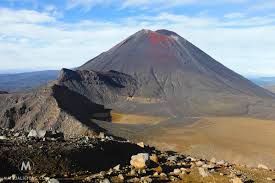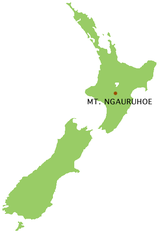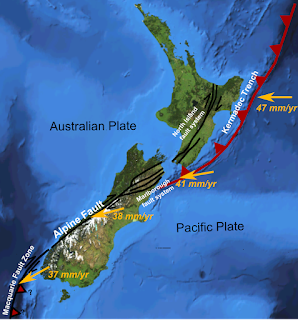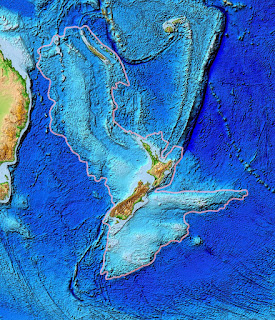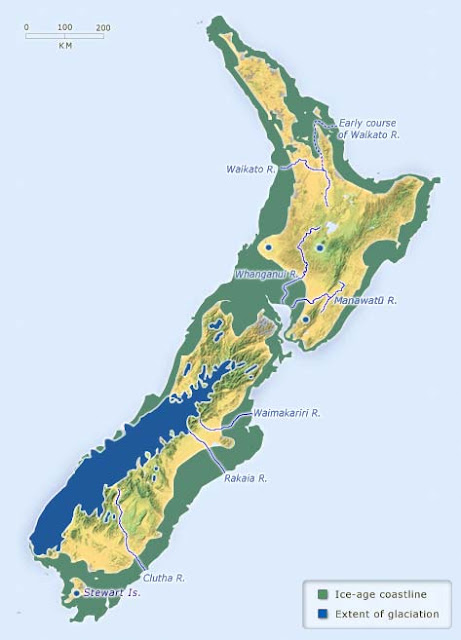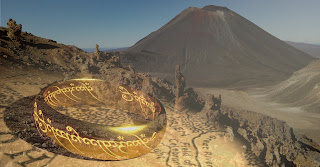Mt. Ngauruhoe is a stratovolcano located on the North Island of New Zealand in the Tongariro National Park.
The boundary between the Pacific and Australian Plates runs right through New Zealand.
Along the North Island the Pacific plate is subducting beneath the Australian plate. Through the South Island, however, the boundary is a transfer fault uplifting the mountains of the South Island through compression. The difference in the Boundary types in different locations is due to New Zealand once having been a larger continent that became submerged. On this map you can see the lighter blue surrounding New Zealand. That is the part of that larger continent that is still submerged. It has been named Zealandia. Despite being under water, since both sides of the boundary through the South Island are continental crust they compress into one another instead of subducting. However, since the boundary along North Mountain, where Mt. Ngauruhoe resides, is oceanic crust on one side and continental on the other, this portion subducts the heavier oceanic crust of the Pacific plate below the lighter continental crust of the Australian plate.
The Pink outline on the map to the right shows the perimeter of the underwater continent of Zealandia. Through the interaction of this complex tectonic boundary a string of volcanoes have repeatedly developed and calmed to develop the islands that we know of today as New Zealand. As one tip of the Pacific Ring of Fire, these islands that hide the secret of a mysterious, underlying continent continue to give birth to new volcanoes. The youngest to date is Mt. Ngauruhoe erupting last in the 1970s.
The map above shows the glaciation extent of the last ice age about 20,000 years ago. Though the mountains of New Zealand receive snowfall through their winters, Mt. Ngauruhoe, is too young, estimating between 7,000 to 2,500 years old, to have experienced any heavy glaciation.
Though there are clearly rivers that run off of the mountains on North Island, most likely due mainly to snowmelt, the main cause for the formation of these mountains remains plate tectonics and volcanism.
What is it about volcanoes that draws us? Massive giants capable of incredible destruction, and yet we do not hesitate to occupy the land they form and live in their shadows. Perhaps it is the reminder of life's cycle that draws us. New lands and life growing out of devastation. A reminder of our fragility and preciousness of existence. Whatever the draw, it is clear that volcanoes are great beasts that will forever haunt and be cherished by the stories of man. From the folklore of the Morai, New Zealand's natives, to the worldwide adoration as Lord of the Rings Mount Doom, Mt. Ngauruhoe is proof of this.
Eileen McSaveney, 'Glaciers and glaciation -
The ice ages', Te Ara - the Encyclopedia of New Zealand,
http://www.TeAra.govt.nz/en/map/10737/the-last-glaciation (accessed 14 December
2020) Story by Eileen McSaveney, published 24 Sep 2007
